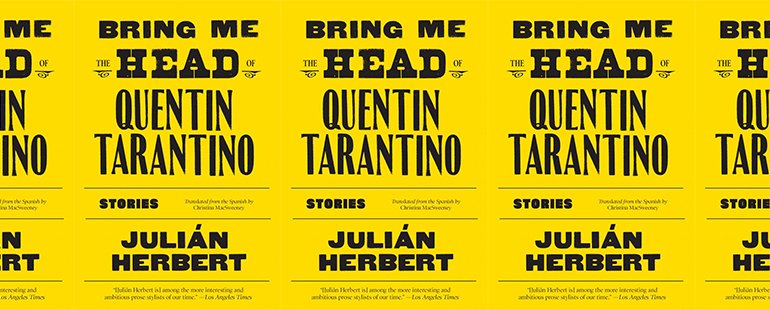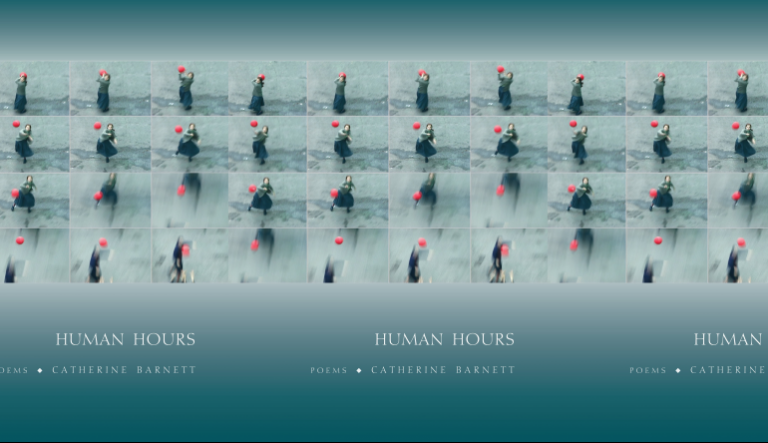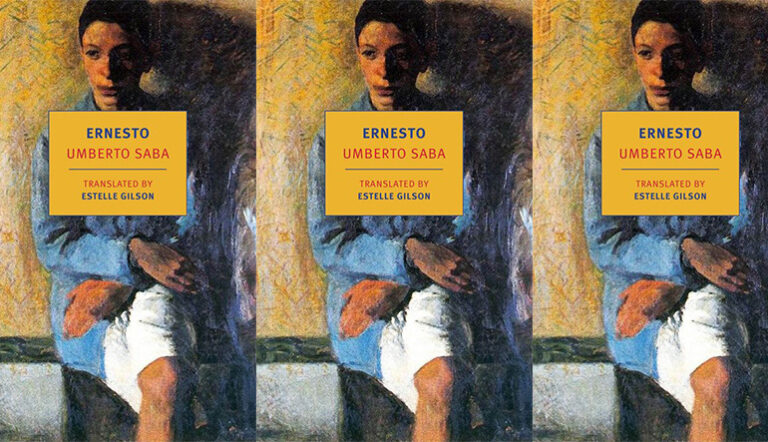Bring Me the Head of Quentin Tarantino by Julián Herbert

Bring Me the Head of Quentin Tarantino
Julián Herbert
Graywolf Press | November 3, 2020
Imitation might be the most sincere form of flattery, but Julián Herbert prefers parody. His story collection Bring Me the Head of Quentin Tarantino flatters Western-style writers like the book’s namesake, Cormac McCarthy, Denis Johnson, and Roberto Bolaño, and then cuts them down to size. Packed with the outlaws, quippy dialogue, and violence of his influences, Quentin Tarantino emphasizes the tragic circumstances that fuel these kinds of stories, proving that a Western is neither a setting nor a gun. It is a mindset and a circumstance. The result is a kaleidoscopic collection that begins faithful to influences, then morphs into a postmodern wrestling match between the seduction of capitalistic thought and the economic inequity that keeps the characters in such claustrophobic and dangerous internal worlds. Any story where a character is subjected to capitalist oppression is a Western.
Released three years ago in Spanish, Christina MacSweeney’s English translation imbues the collection’s narrators with the same enterprising charisma as she did the enigmatic Highway in Valeria Luiselli’s The Story of My Teeth. Herbert walks the Roberto Bolaño-paved path of pairing writer characters and criminal acts, but instead of language being a privilege for the wealthy while sinister acts surround them, our storytellers perpetrate all kinds of devious and criminal enterprises, ranging from phony arrests to identity theft that funds a crack addiction. Herbert’s opening story, “The Ballad of Mother Teresa of Calcutta,” instills the familiar and terrifying delight of Johnson, McCarthy, and Tarantino. It features a writer penning another man’s memory—Max—of seeing the now-saint at an airport. After Max imagines a metaphorical Hellscape behind her “bottomless pit” smile, he pukes on her. The amount of details are claustrophobic, and it’s only upon the narrator pulling out to disclose he’s delivering on a threat of blackmailing Max by telling this story that we realize this Tarantino- or McCarthy-like gore isn’t the rule of law of the collection; it’s merely a feature.
Ruthless, impersonal capitalism—resulting in Max’s tragic inability to pay our narrator—is the source of gore in the story, as it is throughout Quentin Tarantino. Visceral, claustrophobic details paint cruel and selfish motivations: in “M. L. Estfanía” the journalist narrator steals the identity of a famous writer with the help of co-conspirators who all sealing the secret with a one-time group sex session. In “White Paper,” a sound is described as “exactly like the scratching of a fountain pen amplified five-hundred fold, a stylus generating notes as it draws the grooves of our brains on scraps of paper.” Throughout the collection, Herbert and MacSweeney’s writing saran wraps us to the insular worlds of characters, revealing people who have little concern for larger society.
The book’s fourth and fifth stories complicate the Blood Meridian– or Jesus’s Son-style agnostic attitude toward violence. Herbert creates a kind of Wild West of the mind where character survival and success is predicated on a dog-eat-dog, ethics-abandoned, pure capitalist philosophy, shocking the reader with the risky, horrifying pursuits of the characters. Usually, what is it to a Cormac McCarthy reader if a character moves some bricks of coke or scams old ladies to make ends meet? But here, when the narrator in “NEETS” says they are making unsafe pornographic movies with dead people and people with AIDS, and are “no longer doing it for the aesthetics. Not even for the politics. I’m doing it for the money,” the reader is appalled. While not every story in Quentin Tarantino is a tragedy, their physically and emotionally capitalist circumstances are.
In the final, title story of the collection, a Tarantino scholar is kidnapped by a Tarantino lookalike who has sent hitmen to kill real-life Tarantino. Crucially, where previous pieces in the collection rely on journalistic narrator cutaways or the presence of queer culture to parody the traditional Western, the title story braids its juicy plot with the Tarantino scholar’s actual master’s thesis on the famous director. It’s a move that withholds violence and homages to films like Pulp Fiction in order to feed the reader something else: long paragraphs about the sublime and Tarantino’s influences. Herbert writes that Tarantino drew from kitsch films to create high art, and now Herbert is trying to make kitsch of Quentin Tarantino. He makes concrete the admirable and eternal artistic practice of turning respected contemporary work into something two-dimensional by adding a new dimension yourself. The title story’s braiding adds to the violent in-scene conflict an ideological one: The sturdy but flawed morals of a Tarantino character can drive them to do horrific things, but Herbert assigns that sturdiness to the economic or social circumstances, and imbues his characters with emotional vulnerability. It’s a hard-won, worthwhile insight.
Bring Me the Head of Quentin Tarantino is an ambitious, generous boon. While this deliberately challenging read might turn off a casual reader, Herbert’s parody of Tarantino’s style and MacSweeney’s lively translation chart unmarked territory for other artists to explore. This book does future writers a kindness: Herbert is practically begging to be turned into kitsch.


